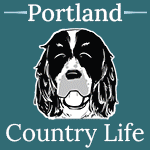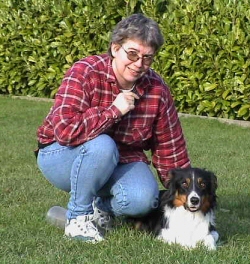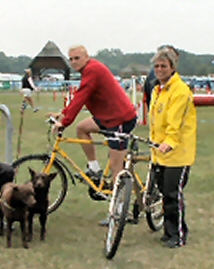|
Co-sponsors of the 2023 Winning Out
Certificates



| |
An alternative way
 With
the matter of new grades on the agenda for the next Kennel Club Agility Liaison Council meeting
(February 2006) , we thought it might be interesting to have a look at how one of our agility
neighbours handles the issue of progression. Relinde Peschier, a frequent visitor to Dogs in
Need and Supa Dogs, explains how it's done in Holland. With
the matter of new grades on the agenda for the next Kennel Club Agility Liaison Council meeting
(February 2006) , we thought it might be interesting to have a look at how one of our agility
neighbours handles the issue of progression. Relinde Peschier, a frequent visitor to Dogs in
Need and Supa Dogs, explains how it's done in Holland.
Agility rules in The
Netherlands are very different from the FCI and UK's way of progressing.
For a long time the Dutch have had a system which allowed
dogs to move down a level as well as up when they could not compete at a higher level because
of, say age or injury. Until recently it was based on a yearly progression/regression.
In 2005 a new system combining the best of the FCI and
Dutch rules was introduced to make it easier for a good dog to progress through the ranks in a
short time while those no longer able to compete at that level could move down a grade so that
they could run at their own level again. It works on points which are earned at special
'selection shows' and/or on podium places.
Progression on podium
places is dependent on clear rounds over a period of two years. Progression on points is
dependent on excellents for just one agility season.
For example, if a handler/dog combination is good, they can go up
to the highest level within one year by winning three podium places in each level. They would
be promoted after 18 days. If a combination has declined for whatever reason, they will be
re-classified and put back to the level where they belong. However, if it is just a matter of
an injury or temporary problem a dog can return to the higher if it is good enough by gaining
enough points.
Each size - Large, Medium and Small has its own competition. Most
of the time, the Small and Medium dogs run the same course which is different from the Large
one. The Large class fills one ring (maximum 320 starts) while the Small/Medium dogs fill the
other ring.
In Holland
about 1800 dogs are have agility licenses from KNK Cynophilia (Dutch Kennel Club). They are
divided into five classes each with
three grades and are organised by level and size.
-
A-klasse (Starters) and B1 (2nd grade) are open to all
size dogs - Small, Medium and Large. They are unlimited which means that if there are
more than 110 entries at a show, they are divided (at random) into two groups. Thus far, they
have not reached the point yet of 220 entries at a single show although there are more than
400 competitors at these levels.
-
B2 (Large dogs only - 3rd grade) and C large (Small, Medium, Large -
3rd grade) are limited to 100 entries but most of the time only 90 make it to the
end.
-
Medium C is limited to 60 entries.
-
Small C is limited to 40 entries
-
Veteranen klasse
is for dogs seven years and older. If a handler enters this class, they cannot go into
another class.
Shows usually have 1, 2 or 3 rings though a two-day
shows can have up to five rings altogether. Each ring is allowed a maximum of 320 starts. Most
have three rounds = Jump, Agility and game. In general, one could say that the bigger the
class, the bigger the difference in quality.
Points are awarded to all dogs with an excellent in Jumping and
Agility as follows:-
|
LARGE |
MEDIUM |
SMALL |
|
Place |
Points |
Place |
Points |
Place |
Points |
| 1 |
80 |
1 |
40 |
1 |
20 |
| 2 |
75 |
2 |
36 |
2 |
16 |
| 3 |
70 |
3 |
32 |
3 |
13 |
| 4 |
65 |
4 |
29 |
4 |
10 |
| 5 |
60 |
5 |
26 |
5 |
8 |
| 6 |
56 |
6 |
24 |
6 |
6 |
| 7 |
52 |
7 |
22 |
7 |
4 |
| 8 |
48 |
8 |
20 |
8 |
3 |
| 9 |
44 |
9 |
18 |
9 |
2 |
| 10 |
40 |
10 |
16 |
10 |
1 |
| 11 |
37 |
11 |
14 |
11 |
1 |
| 12 |
34 |
12 |
12 |
|
|
| 13 |
31 |
13 |
10 |
|
|
| 14 |
28 |
14 |
8 |
|
|
| 15 |
25 |
15 |
6 |
|
|
| 16 |
23 |
16 |
5 |
|
|
| 17 |
21 |
17 |
4 |
|
|
| 18 |
19 |
18 |
3 |
|
|
| 19 |
17 |
19 |
2 |
|
|
| 20 |
15 |
20 |
1 |
|
|
| 21 |
13 |
20 |
1 |
|
| 22 |
11 |
|
The
number of points need for progression depends upon the place in ranking. For
instance In C-Large, the top 75 dogs stay in C while the rest go back to B2, In
C-Medium, the top 30 dogs stay in C and the rest go back to B1 while in C-Small,
the top 15 dogs stay in C and the rest go back to B1.
In B2-Large, the top 25
dogs go to C, the next 40 stay in B2 and the rest go back to B1. In B1-Large, the
top 45 dogs go to B2, the top 10 Medium and Small dogs go to C.
All
dogs with excellent get at least 1 point. |
|
| 23 |
9 |
| 24 |
7 |
| 25 |
5 |
| 26 |
4 |
| 27 |
3 |
| 28 |
2 |
| 29 |
1 |
| 30 |
1 |
After every selection show, handlers can see if they have climbed in the agility competition
online at www.lhbsystems.nl/. If they need more points,
they stay in the same class. The results go back to 2002. This makes agility more fun for
everybody, not only for the best. You can compete against your fellow club handlers who run in
the same grade... even if it is for place 110.
Last year
was the first year the
new rules were introduced. It's believed that the new
system has found the right balance between pro-and regression. Most
handlers seem pleased with the new rules. Good dogs can progress fast and the majority can
still compete against each other. Some dogs bounce up and
down each year from B2 to C and back the next year.
Admittedly the progression system does give extra work for show organisers, but in Holland they
have 'professionals' who take care of the admin for the show secretaries. Specially devised
computer programs ensure that everything is on the Internet the next day and that results are
send to the head office.
Dogs that are promoted on the basis of podium places cannot be demoted because of lower
rankings but can be promoted to a higher class. This happened with three dogs who went from B1
to B2 by three podium places and had enough points in B2 to go into C at the end of the year.
In the year 2006, there will be about 40 show of which nine will be selection shows. The best
seven combined results (Jumping + Agility) count towards progression. Other agility shows have
an Open Class the next day for those who want to run without the pressure of getting points.
Others just have selection classes. Nearly every show has classes for A and Veterans.
 About
the author... About
the author...
Relinde Peschier (47) and her husband Ruud run their own agility dog school McDogs
where they give private as well as group lessons. They have two 12-year old Laekenois,
rough-coated BSDs and three Border Collies, aged seven, five and two.
She
started agility in 1989 and has been happily competing at each level ever since. In 1995, she
did the judging seminar in England and later the Dutch seminar, so now she is also judging
around the world. Relinde does a lot of show secretary work to make life easier for show
organisers and, in addition, gives seminars to judges, handlers and instructors all with the
same goal: Try to get the best out of each combination.
Relinde still struggling in the B1 because of the good old days when one could go from A to
B1 with 1 mistake on each round. Now you need clear rounds. She would prefer smaller classes -
much more fun to watch and easier to make schedules, too!
| |
|
 About
the author...
About
the author...